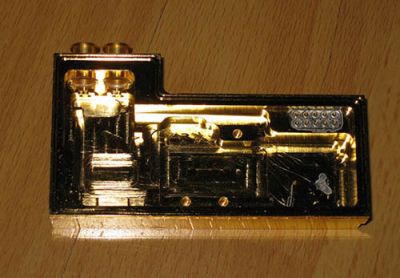There are four factors in the fully described method of the relationship between the basic tool work during cutting in Dongguan CNC processing plant: tool geometry, cutting speed and depth of cut. The tool must be made of appropriate materials; it must have a certain strength, roughness, hardness and fatigue resistance. The tool geometry is described by faces and angles, which are correct for every cutting operation. Cutting speed refers to the speed at which the cutting edge passes through the working surface, expressed in feet per minute. Dongguan CNC processing plant must have an appropriate scale for processing efficiency and cutting speed relative to a special work combination. Generally speaking, the harder the workpiece, the lower the speed. Feed is the rate at which the tool enters the workpiece. When the workpiece or tool rotates, the unit of feed is inch per revolution. When the tool or workpiece moves back and forth, the unit of feed is inch per time. Generally speaking, the feed is inversely proportional to the cutting speed in other similar situations. The cutting speed is expressed in inches, which is the distance the tool enters the workpiece. It refers to the width of the chip during turning or the thickness of the chip during straight cutting. The depth of cut during rough machining is greater than the depth of cut during finishing.
The influence of the change of cutting parameters on the cutting temperature
In the metal cutting operation of Dongguan CNC processing plant, heat is generated in the main and second deformation zones and these results have led to complex temperatures throughout the tools, workpieces and chips. A typical isothermal temperature is first shown in the figure. It can be seen that, as predicted, when the workpiece material undergoes major deformation and is cut, there is a very large temperature gradient across the entire width of the chip. When the chips in the second deformation zone are still a short distance away, they reach the maximum temperature.
Because almost all of the work of the Dongguan CNC processing plant is converted into heat by metal cutting, it can be predicted that the increased energy consumption of removing each unit volume of metal will increase the cutting temperature. Therefore, when all other parameters remain unchanged and the rake angle becomes larger, the energy per unit volume of metal removal and the cutting temperature will be reduced. When considering increasing the thickness and speed of the unformed chips, the situation becomes more complicated. Increasing the cutting thickness will often greatly affect the amount of heat transferred to the workpiece and the amount of tools, and it will make the chips stay at a fixed amount. At the same time, the change in cutting temperature will be small. However, increasing the cutting speed will reduce the heat transferred to the workpiece. This will increase the temperature rise of the main deformation of the chips. In addition, the second deformation zone is relatively small, and the temperature will increase in this deformation zone. Other changes in cutting parameters hardly affect the removal of energy consumption per unit volume and cutting temperature. Therefore, it has been shown that even small-scale changes in cutting temperature have a significant impact on tool wear rate. Dongguan CNC processing plant is appropriate to estimate cutting temperature from cutting data. The most direct and accurate method to detect high-speed steel tools, Trent gave detailed information on the temperature distribution of high-speed steel tools. This technology is based on data detection of high-speed steel tools and is related to microscopic changes in thermal history.
Trent has described the measurement of cutting temperature and the temperature distribution of high-speed steel tools when machining a wide range of workpieces. The use of scanning electron microscopy to study fine-scale microstructure changes has been further developed. This technology is also used to study the temperature distribution of high-speed steel single-point turning tools and twist drills.







